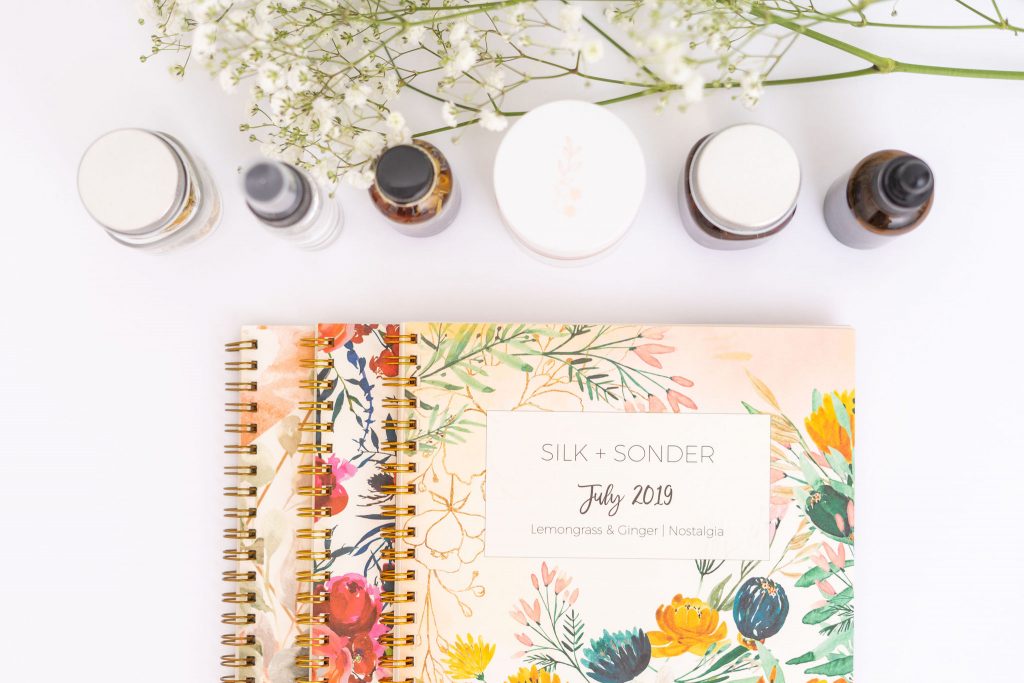It’s 7 AM. That’s your alarm crying out. You grab your phone to turn it off, not fully awake yet. Next thing you know, you’re opening your email app.
The daily news digest hits you over the head like a ton of bricks. You’re suddenly scrolling through a series of urgent work requests and meeting invites.
Involuntarily, you suck in a breath and hold it.
STOP.
Exhale.
Okay, that’s better.
The above scene was closely inspired by my actual life. I’ve found that mindless habits (like compulsive scrolling) can really amplify my stress.
In fact, I believe acting without self-awareness is one of the most dangerous things you can do.
To bring myself back into balance, I’ve integrated intentional, reflective practices into my daily life.
And gratitude journaling is one of the most powerful tools I’ve tried.
Introducing: Gratitude Journal 2.0
“We’ve studied more than one thousand people, from ages eight to 80, and found that people who practice gratitude consistently report a host of benefits,” says gratitude expert Robert Emmons in “Why Gratitude is Good.”
According to Emmons, gratitude has been shown to strengthen your immune system, lower blood pressure, increase joy and alertness, and reduce feelings of loneliness and isolation.
If you’re reading his article, you may already have your own gratitude journaling practice– regularly listing out everything you are grateful for in your life.
Recently, I have been experimenting with an even more powerful gratitude journaling method, and I would love to share it with you!
I call it the Gratitude Journal 2.0 and I’ve experienced numerous benefits:
- I can maintain a calmer, more aware perspective in the midst of stressful situations.
- I can coax favorable outcomes out of difficult challenges more easily.
- I notice numerous little serendipities arise throughout the day.
- I find myself connecting with people who are notably more positive and optimistic.
- I’ve been experiencing an increase in the things I am grateful for.
So without further ado…
Here’s my advanced, 3-step method for squeezing even more benefits and insights out of your gratitude journal practice:
Step 1: What Are You Grateful For?
The basic list of gratitudes is the foundation of every gratitude journal.
Start by choosing your journaling tool. Don’t feel limited to any particular medium, just choose what you like best– paper notebooks, computers, note-taking apps, and voice memo apps are all fair game! If you’re without a recording device, you can even meditate on your responses.
Find a comfortable position and remove any distractions as best you can. Then, begin listing everything you are grateful for. If you’re using paper, make sure to space each item out– we will be adding more detail later.
Example from my gratitude journal:
I am so grateful for the succulents thriving in my garden.
If you need an extra spark to get started, here are some ideas:
- Limit yourself to listing only 5 items in total. Writing shorter lists can help you stay more focused and motivated.
- Start small — the tiniest details are sometimes the most accessible.What do you smell and hear right now? Did you see anything pretty today? What was the last thing that made you laugh?
- Or, start big — zoom out and express gratitude for the big picture. Isn’t it remarkable that humanity exists? That we can feel love for each other? That we can be so strong and resilient? That the night sky is filled with stars and swirling galaxies? That the sun shines down on the earth every day?
Step 2: Why Are You Grateful?
Now, let’s take your simple gratitude list to the next level and describe why you are grateful for every item on your list.
What does each item mean to you, specifically?
Thinking about WHY will help you get to the roots of your gratitude. And as you unearth these roots, you will begin to see the many energetic connections between your soul and the rest of the universe.
Example from my gratitude journal:
I am so grateful for the succulents thriving in my garden because it shows me that the earth provides for all living things, that seasons keep ebbing and flowing in reliable rhythm. My thriving succulents remind me that I am capable of nurturing another life and making the world a prettier place.
Gratitude is first “an affirmation of goodness,” says Emmons. “We affirm that there are good things in the world, gifts and benefits we’ve received… [and] The second part of gratitude is figuring out where that goodness comes from. We recognize the sources of this goodness as being outside of ourselves.”
In the above example, while the succulents are certainly lovely, what they symbolize to me is even more potent. My succulents represent the magic and power of the natural world– and my own innate capacity to tap into that rhythm.
Conjuring that big picture perspective immediately relaxes my body and breath. I see my unique microcosmic role in the intricate, overlapping systems that make up our universe, and so I release my grip on superficial thoughts and worries just a little. I am present.
Step 3: How Does It Make You Feel?
Next, let’s forge emotional pathways that lead back to your gratitude, for future use.
For every item on your gratitude list, reflect on HOW that item (and the meaning behind it) makes you feel.
This emotional wisdom will help you tap into the physical, psychological, and social benefits of your gratitude practice under any circumstances. Relaxing your body, slowing your thoughts, and feeling connected with others can become an automatic reflex during times of stress.
Example from my gratitude journal:
I feel immense joy caring for my succulents and watching them grow. I feel so comforted and inspired knowing that life is blooming all around me, supported by sunlight and water.
Using your emotions to cue desirable behavior is a strategy that pops up in James Clear’s Atomic Habits.
“Emotions drive behavior. Every decision is an emotional decision at some level. Whatever your logical reasons are for taking action, you only feel compelled to act on them because of emotion,” says Clear.
Using the above example, by leaning into the positive feelings I experience while exploring my gratitude, I train my brain to come back to these thoughts (and thus these feelings) on command.
When I feel stressed, I find something to feel immediately grateful for, then run through Steps 2 and 3. Within a few moments, I can get myself to feel downright ecstatic! And further, I’m much better equipped to make the necessary decisions to address the stressful situation.
Bonus Step: Ask For More!
One of the most effective methods for releasing control is to express a simple prayer. Prayer is not necessarily religious. But it is deliberate communication with a force outside yourself.
“Our true safety lies in our capacity to align with the love of the universe,” says spiritual self-help author Gabby Bernstein in Super Attractor.
She’s right. There’s a reason why 12-step programs begin with surrendering to a higher power. Releasing control over a particular outcome creates the ideal emotional conditions for flow and transformation.
Example from my gratitude journal:
Universe, please continue to provide us with the abundant resources needed to nourish and sustain our bodies and souls.
This final step is extremely powerful. Through the magic of confirmation bias (or is it the law of attraction?), I start to notice more and more things to be grateful for. Positive people and joyful experiences seem to multiply.
It’s impossible to prove whether there is a quantitative increase in the number of desirable events happening in my life. But what I can tell you for sure is this: My baseline emotional state is happier, calmer, and more optimistic.
Difficult Times Call For Deeper Reflection
Even in the midst of a crisis (like the harrowing pandemic we are all experiencing right now)– you always have the power to bring your mind back into balance and awareness.
Gratitude journaling is a powerful tool for enhancing your overall wellbeing and reducing stress– and you can intensify those benefits by diving deeper into the details of WHY you are grateful and HOW it makes you feel.
Start small, and choose just one item from your gratitudes list to explore deeper today. Then, ask the universe for more.
Notice what happens.
At the very least, you may feel a little bit better.
And that might make all the difference.
Related Articles
- How I Created My Own Custom Spiritual Practice
- How to Start a Manifestation Journal (+ Manifestation Journal Prompts)
- 11 Grounding Affirmations To Keep You Centered Through Any Crisis





